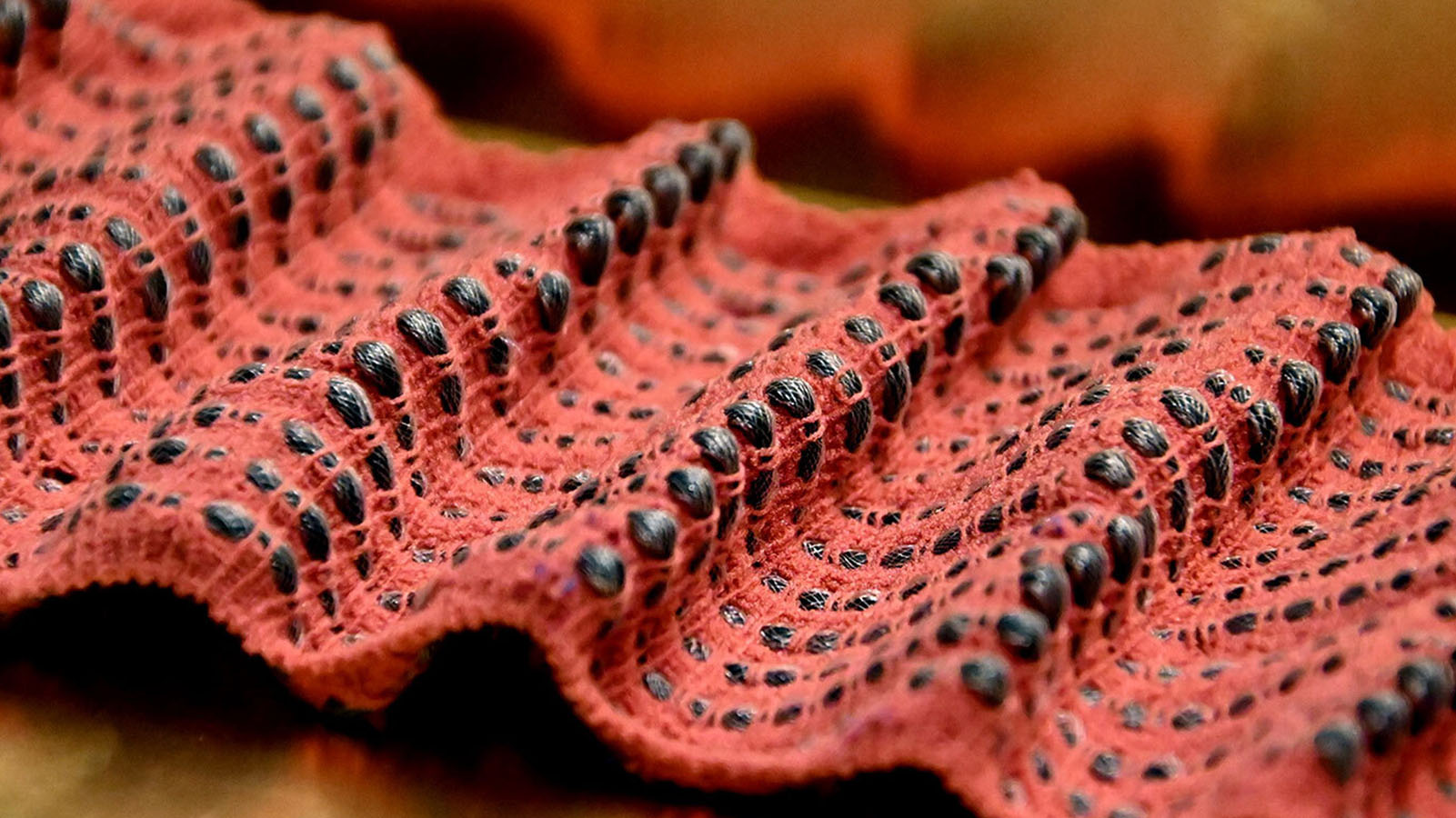Coaching from clothing
Fibers that act as artificial muscles could help singers, athletes, and others learn to control their breathing.

What if a piece of clothing could train you to be better at singing, sports, or other activities? A new kind of fiber developed by researchers at MIT and in Sweden could make that possible.
OmniFibers, as they are called, function as artificial muscles. They consist of five layers, including a fluid channel, a silicone-based elastomeric tube to contain the fluid, and a soft sensor that uses electrical resistance to detect how much the fibers are being stretched. Clothing made from this material could sense how much it is being stretched or compressed, and then provide immediate tactile feedback to wearers.
The researchers had an opera singer perform while wearing an undergarment made from their fibers. Then they recorded the movement data from the strain sensors and translated it into tactile signals that could encourage optimal posture and breathing patterns in another singer wearing the garment. They were able to “record and replay the complex movements that we could capture from an expert singer’s physiology and transpose it to a nonsinger, a novice learner’s body,” says Ozgun Kilic Afsar, a research affiliate at MIT and a coauthor of a paper describing the work along with Hiroshi Ishii, a professor of media arts and sciences.
The same approach could be used to help athletes, convalescing patients, and others learn to optimize their breathing in a given situation, Afsar says.
Ishii, too, can foresee a variety of applications. “Everybody has to breathe. Breathing has a major impact on productivity, confidence, and performance,” he says. “Breathing is important for singing, but also this can help when recovering from surgery or depression.”
Keep Reading
Most Popular
Large language models can do jaw-dropping things. But nobody knows exactly why.
And that's a problem. Figuring it out is one of the biggest scientific puzzles of our time and a crucial step towards controlling more powerful future models.
How scientists traced a mysterious covid case back to six toilets
When wastewater surveillance turns into a hunt for a single infected individual, the ethics get tricky.
The problem with plug-in hybrids? Their drivers.
Plug-in hybrids are often sold as a transition to EVs, but new data from Europe shows we’re still underestimating the emissions they produce.
Stay connected
Get the latest updates from
MIT Technology Review
Discover special offers, top stories, upcoming events, and more.